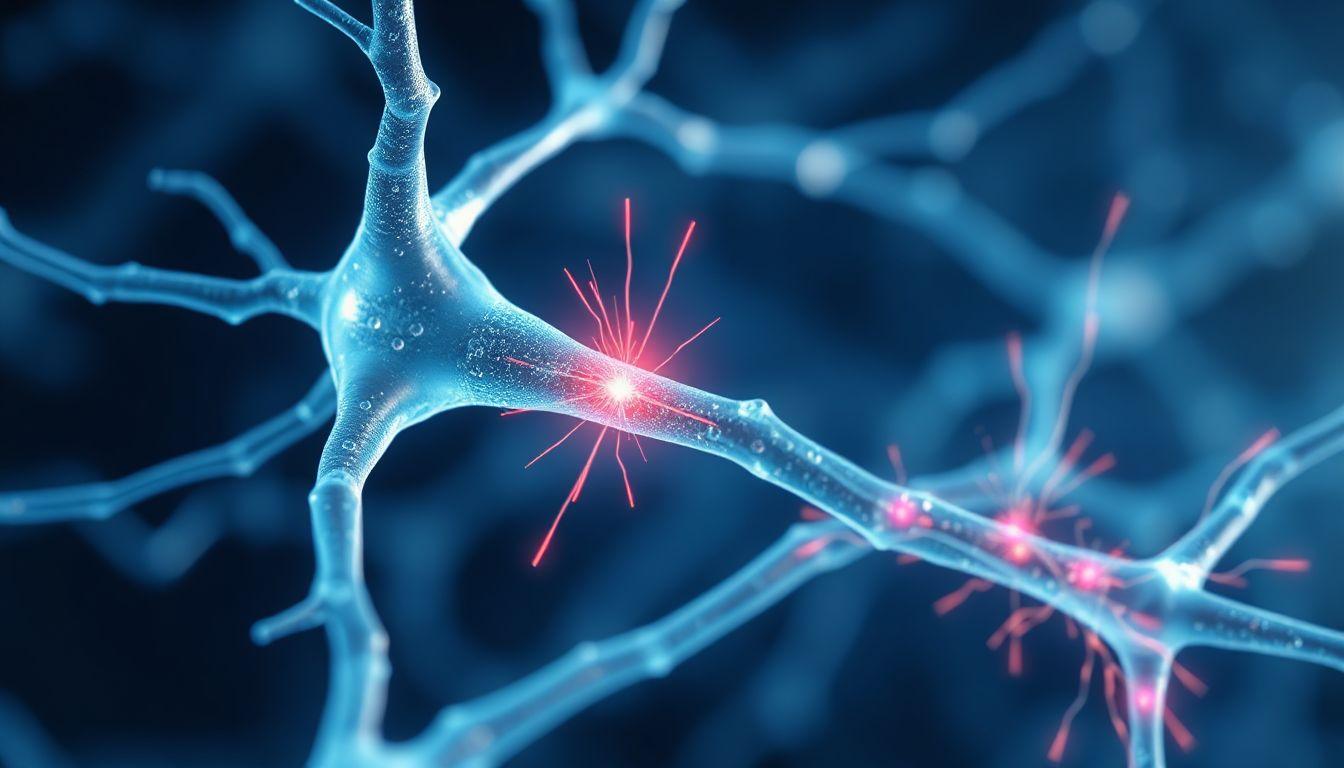How Nervigesic 300mg (Pregabalin) Works to Reduce Nerve Pain: Mechanism and Efficacy

Imagine waking up each day with a burning sensation in your feet that no amount of rest can ease. Over 20 million adults in the US deal with neuropathic pain like this, often from diabetes or shingles aftermath. It steals your focus and joy. Nervigesic 300mg, a form of Pregabalin, steps in as a key treatment. This article breaks down how it targets nerve pain at its root. We'll explore the science behind Pregabalin's action and why the 300mg dose hits the sweet spot for many folks seeking relief.
Deconstructing Neuropathic Pain: The Electrical Malfunction
The Difference Between Acute and Chronic Nerve Pain
Neuropathic pain comes from harm to your nerves themselves, not just an injury. Think of it like a short circuit in your body's wiring. Unlike sharp pain from a cut that fades, this type lingers and flares without reason. It feels like electric shocks or constant tingling. Standard pain meds often fall short here because they don't fix the nerve glitch.
Chronic nerve pain builds over time. It changes how your brain reads signals. Acute pain warns you of danger and heals. But neuropathic pain tricks your system into endless alerts. This mix-up leads to misery that disrupts sleep and daily tasks.
The Role of Hyperexcitability in Pain Signaling
Damaged nerves get too excited, firing off signals non-stop. This is called hyperexcitability. Your body amps up pain messages through central and peripheral sensitization. In the brain and spinal cord, central sensitization makes normal touches hurt. Peripheral nerves near the damage also overreact.
Picture nerves as overzealous alarms. They blare at the slightest breeze. This constant buzz floods your system with pain info. Pregabalin calms this storm by quieting the signals.
Why does this happen? Injury or disease scars the nerves. They leak chemicals that keep them revved. Over time, this creates a pain loop hard to break.
Identifying Common Causes Managed by Pregabalin
Pregabalin shines for several nerve pain sources. Diabetic peripheral neuropathy tops the list, affecting feet and hands in folks with high blood sugar. Postherpetic neuralgia follows shingles, leaving skin hypersensitive long after the rash fades.
Fibromyalgia brings widespread aches and fatigue tied to nerve issues. Epilepsy seizures sometimes link to similar pathways, so Pregabalin helps there too. Spinal cord injuries or chemotherapy side effects round out common triggers.
- Diabetic neuropathy: Numbness and burning from poor blood flow.
- Postherpetic neuralgia: Sharp jabs in old shingles spots.
- Fibromyalgia: Deep muscle pain with tender points.
Each case varies, but Pregabalin's broad action fits many.
The Molecular Target: Voltage-Gated Calcium Channels
Introduction to Alpha-2-Delta (α2δ) Subunits
At the heart of Pregabalin's power sits the alpha-2-delta subunit. This part helps voltage-gated calcium channels in nerve cells. Unlike opioids that dull broad pain, Pregabalin zeros in on these channels. It skips the addiction risks of other drugs.
These subunits boost calcium flow into nerves. That flow triggers pain signals. Pregabalin latches on and dials it back. This targeted hit makes it a smart choice for nerve pain relief.
How Pregabalin Binds and Modulates Channel Activity
Pregabalin slips into the α2δ spot on those calcium channels. It binds tight, like a key in a lock. This slows calcium ions from rushing in at nerve ends.
With less calcium, nerves stay calmer. The drug doesn't block the channels fully. It just tones down their overdrive. This fine control eases pain without numbing everything.
Ever wonder why some meds make you foggy? Pregabalin focuses on pain paths, sparing other brain functions mostly.
The Consequence: Reduced Neurotransmitter Release
Lower calcium means fewer excitatory chemicals spill out. Glutamate and substance P drive pain forward. Pregabalin cuts their release at the synapse.
Think of it as turning down a noisy radio. Signals weaken before they reach your brain. This breaks the pain chain at the source.
Result? You feel less burn or stab. Studies show this drop in neurotransmitters slashes pain scores by 30-50% in trials. It's a chain reaction starting with that smart binding.
Dosage Matters: Why 300mg of Nervigesic is Therapeutically Significant
Understanding Dose-Dependent Effects and Titration
Doses of Pregabalin build gradually for best results. Start low, like 75mg, to test tolerance. Ramp up over a week to 300mg daily, split into two or three takes.
Why 300mg? It hits a level where most see strong relief without overload. Your body responds based on weight, age, and pain type. Docs tailor it, but this dose often sticks.
Titration avoids shocks. Jump too fast, and side effects spike. Slow build lets benefits shine.
Pharmacokinetics: Absorption, Steady State, and Half-Life at 300mg
Nervigesic 300mg absorbs quick, peaking in blood in an hour. It reaches steady state after a few days of regular use. Half-life runs about six hours, so twice-daily dosing keeps levels even.
At this dose, it floods α2δ sites enough for full blockade. Plasma peaks hit 5-10 mcg/mL, ideal for nerve calming. Food slows uptake a bit, but not much.
This profile beats erratic meds. Steady flow means consistent nerve pain reduction.
Clinical Efficacy Data for Higher Doses
Trials back the 300mg mark. In one study on diabetic neuropathy, patients dropped pain ratings from 7 to 3 on a 10-point scale. Postherpetic cases saw half report good relief.
Lower doses help mild cases, but 300mg shines for stubborn pain. A meta-analysis of 10 trials found 50% more responders at this level. Visual analog scales confirm the edge.
Of course, not everyone maxes out here. Some thrive lower, others need tweaks.
Pharmacological Comparisons and Safety Profile
Distinguishing Pregabalin from Gabapentin
Pregabalin 300mg capsules edges out Gabapentin in key ways. It absorbs fully, up to 90%, while Gabapentin varies by dose. This means Pregabalin needs fewer pills for the same kick.
Gabapentin ramps slow; Pregabalin acts faster and steadier. Both hit α2δ, but Pregabalin's profile fits busy lives better. For nerve pain, this translates to quicker calm.
Switching? Docs often convert Gabapentin users to lower Pregabalin doses due to potency.
Managing Side Effects Associated with 300mg Dosing
Dizziness and sleepiness top the list at 300mg. They hit early but fade with time. Take doses at night to dodge daytime wobbles.
Stay hydrated and rise slow to fight dizziness. If it lingers, chat with your doc about tweaks. Most tolerate it fine after a week.
Weight gain or blurred vision pops up less often. Track changes and report them.
Contraindications and Important Drug Interactions
Skip Pregabalin if you're allergic or have heart failure. Kidney issues need dose cuts. Pregnant? Weigh risks; it crosses the placenta.
Mix with opioids or benzos? Sedation doubles. Watch for deep sleep or breath slows. Alcohol amps this too.
Always list all meds for your doctor. They check for clashes like with diabetes drugs.
Conclusion: Achieving Functional Improvement Through Targeted Nerve Modulation
Nervigesic 300mg, as Pregabalin, quiets nerve pain by binding α2δ subunits on calcium channels. This curbs calcium rush, tames neurotransmitter floods, and breaks the pain cycle. From diabetic burns to shingles stings, it offers real relief at this dose.
Key points stick: Start slow with titration for safety. Expect steady absorption for even effects. Compare it favorably to Gabapentin for reliability.
Talk to your doctor before starting. They guide the path to less pain and more life. With smart use, you reclaim your days from nerve chaos. Ready to explore options? Schedule that check-up today.








